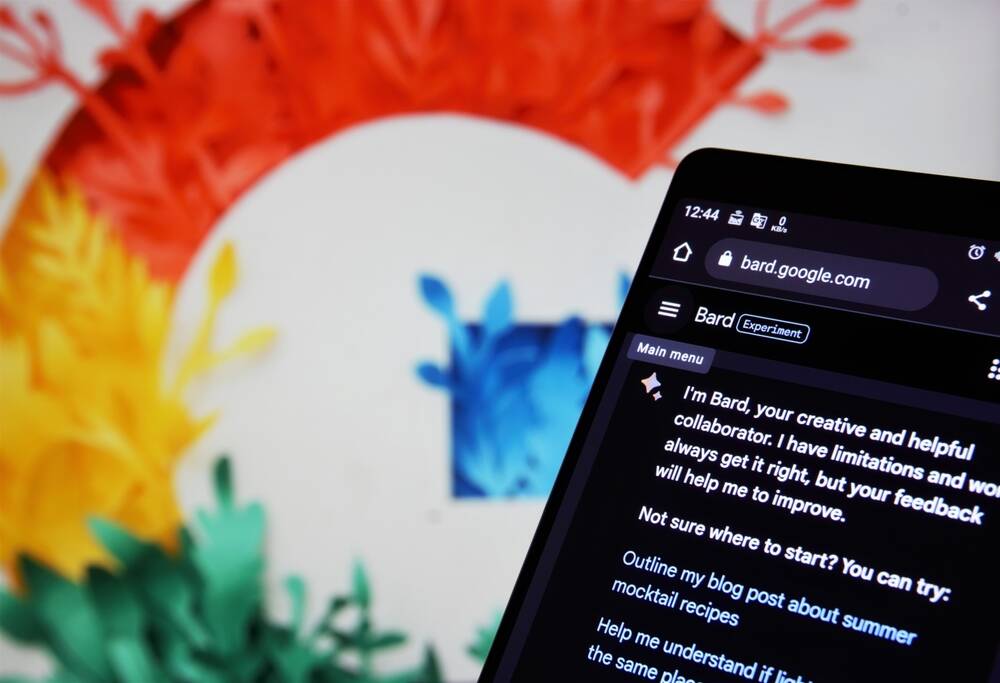
Google Bard can now retrieve and process information from your Gmail, Docs, and Drive as well as other applications, on top of searching the internet.
On Tuesday, the tech titan launched Bard Extensions, which allows the AI chatbot to access and query various Google apps and services, including Maps, YouTube, and its flight’n’hotels listings, as well as Gmail and Drive.
That means users can now ask Bard questions about their own documents and information stored in their personal accounts, and hopefully get a useful answer using that data. It makes the chatbot more useful, Google claims, since it can carry out tasks, such as helping to write a cover letter by summarizing parts of their resume stored in their Google Drive.
Even though the bot – the web giant’s answer to OpenAI’s ChatGPT – can scan your personal information, Google said this info won’t be used to train its models or to target advertisements.
“We’re committed to protecting your personal information,” the corp said in a statement.
“If you choose to use the Workspace extensions, your content from Gmail, Docs and Drive is not seen by human reviewers, used by Bard to show you ads or used to train the Bard model. And of course, you’re always in control of your privacy settings when deciding how you want to use these extensions, and you can turn them off at any time.”
Users are automatically opted in to Bard Extensions, and have to manually disable access to turn the system off.
Bard conversations can also be shared with other users, and it can connect to other Google products, not just Workspace apps. The new features mean Bard should be better at doing things like helping plan a trip with your friends.
It can search for flights, hotels, and directions, and link to popular videos to watch about a particular destination. Other people in the conversation can also see the information and interact with the chatbot, too, Google said.
Let me Google that for you
AI chatbots including Bard will confidently make stuff up, and so users should verify these bots’ output before trusting them and making any decisions. To make it easier to check Bard’s work, Google has introduced the ability to fact-check statements produced by the software via an updated “Google it” button.
Before, you could query Bard, and then after getting a response, click on the “Google it” button to, well, run your query through Google search to see if that can come up with any additional information.
Now, when you click on “Google it”, Bard will compare its output to the content of relevant pages it can find on the web, and will add links in its response to pages that confirm or contradict its original answer. Essentially, the button asks Bard to provide evidence to support its claims, and in the process, it may also highlight stuff it got wrong.
Bard is powered by PaLM 2, a large language model reportedly made up of 340 billion parameters. Google said the above new features, which only support English for now, were made possible only after updating its model.
“Based on your feedback, we’ve applied state-of-the-art reinforcement learning techniques to train the model to be more intuitive and imaginative. So, whether you want to collaborate on something creative, start in one language and continue in one of 40+ others, or ask for in-depth coding assistance, Bard can now respond with even greater quality and accuracy,” it claimed. ®
- SEO Powered Content & PR Distribution. Get Amplified Today.
- PlatoData.Network Vertical Generative Ai. Empower Yourself. Access Here.
- PlatoAiStream. Web3 Intelligence. Knowledge Amplified. Access Here.
- PlatoESG. Carbon, CleanTech, Energy, Environment, Solar, Waste Management. Access Here.
- PlatoHealth. Biotech and Clinical Trials Intelligence. Access Here.
- Source: https://go.theregister.com/feed/www.theregister.com/2023/09/20/googles_ai_chatbot_bard/
- :has
- :is
- :not
- $UP
- 7
- a
- ability
- About
- above
- access
- Accounts
- accuracy
- add
- Additional
- Additional Information
- Ads
- After
- AI
- AI chatbot
- allows
- also
- always
- an
- and
- answer
- any
- applications
- applied
- apps
- ARE
- AS
- ask
- Assistance
- At
- automatically
- based
- BE
- before
- Better
- Billion
- Bot
- bots
- button
- by
- CAN
- carry
- chatbot
- chatbots
- ChatGPT
- check
- Choose
- claimed
- claims
- click
- CO
- Coding
- collaborate
- come
- committed
- compare
- confidently
- Confirm
- Connect
- content
- continue
- control
- Conversation
- conversations
- Corp
- could
- Course
- cover
- Creative
- data
- Deciding
- decisions
- destination
- documents
- doing
- drive
- easier
- English
- essentially
- Even
- evidence
- extensions
- Features
- feedback
- Find
- flight
- Flights
- For
- friends
- from
- get
- getting
- giant
- Google Search
- got
- greater
- Have
- helping
- Highlight
- Hopefully
- hotels
- How
- HTTPS
- human
- if
- in
- in-depth
- Including
- info
- information
- interact
- Internet
- introduced
- intuitive
- IT
- ITS
- jpg
- just
- language
- large
- launched
- learning
- letter
- like
- LINK
- links
- Listings
- made
- make
- MAKES
- Making
- manually
- Maps
- May..
- me
- mean
- means
- model
- models
- more
- New
- New Features
- now
- of
- off
- on
- ONE
- only
- OpenAI
- or
- original
- Other
- Others
- out
- output
- own
- pages
- palm
- parameters
- particular
- parts
- People
- personal
- plan
- plato
- Plato Data Intelligence
- PlatoData
- Popular
- possible
- powered
- privacy
- process
- Produced
- Products
- protecting
- provide
- quality
- Questions
- RE
- relevant
- Respond
- response
- resume
- Run
- s
- Said
- scan
- Search
- searching
- see
- seen
- Services
- settings
- shared
- should
- show
- since
- So
- Software
- something
- start
- state-of-the-art
- Statement
- statements
- stored
- such
- support
- system
- Target
- tasks
- tech
- techniques
- that
- The
- the information
- their
- Them
- then
- These
- things
- this
- though?
- Through
- time
- titan
- to
- too
- top
- Train
- trip
- trusting
- Tuesday
- TURN
- updated
- updating
- use
- used
- users
- using
- various
- Ve
- verify
- via
- Videos
- want
- Watch
- we
- web
- WELL
- were
- when
- whether
- which
- will
- with
- Won
- Work
- write
- Wrong
- You
- Your
- youtube
- zephyrnet













